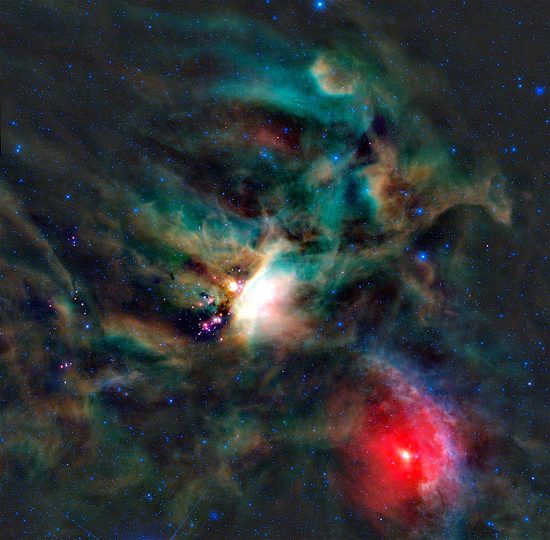
February 11, 2020
Plasma’s behavior is independent of scale.
Intense lightning in thunderstorms can interact with charged particles (cosmic rays) coming from space. Given the right conditions, lightning causes giant particle accelerators to form above the clouds.
Cosmic rays are sub-atomic particles, mostly protons, that can knock electrons off molecules in Earth’s atmosphere. Lightning creates powerful electric fields, so free electrons accelerate upward through the mesosphere in a narrow beam, connecting near-Earth space with the ground. Those electrons, along with the solar wind, are the principle source for the Van Allen Belts.
Most of the electric charge in lightning is contained in the “return stroke”. Negatively charged leaders descend from the clouds, seeking positive charges in another cloud or on the ground. Those negative charges connect to positive charges, so protons ascend the ionized filaments. Return strokes can deliver as much energy as 100,000 volts at 100,000 amps, on average: about 10 billion watts in a few milliseconds.
Electric Universe theory states that what is observed on other planets, within galaxies, or in free space should be used as examples of what can occur on Earth, rather than the other way around. Earth is part of a cosmic “ecology” that maintains a coherent physical aspect regardless of scale. Since the Universe is composed of matter in the plasma state, that aspect ought to apply everywhere. Therefore, what takes place in thunderstorms on Earth is most likely a smaller version of large scale phenomena in stars and galaxies.
The European Space Agency launched the INTEGRAL satellite from the Baikanor Cosmodrome on October 17, 2002 so it is celebrating 16 years in space. It is the first space-based observatory that can study objects in gamma ray, X-ray, and visible light. One of INTEGRAL’s major observations was an extreme X-ray source from the center of the Ophiuchus galaxy cluster.
ESA astrophysicists suggested that shockwaves had “turned the galaxy into a giant particle accelerator”. The temperature of gases in the cluster core were measured at 100 million Kelvin, so it was thought that electrons accelerated by shockwaves traveling through the cluster generated the intense X-rays. The shockwaves were said to be from two galaxy clusters that “collided and merged.”
By referring to material with a temperature of 100 million Kelvin as “hot gas”, ESA scientists can ignore plasma and its behavior. No atom can remain intact at such temperatures: electrons are stripped from the nuclei and powerful electric fields develop, characteristics of plasma. Double layers, so often mentioned in these pages, form in plasma, isolating regions of opposite charge.
Nobel laureate Hannes Alfvén maintained that double layers are a unique celestial object, and that intense X-ray and gamma ray sources could be due to double layers “shorting out” and exploding. Double layers can accelerate charged particles up to enormous energies in a variety of frequencies, forming “plasma beams”. If the charge density becomes excessive, they explode, drawing electricity from the entire circuit and discharging more energy than was contained in the double layer.
Double layers dissipate when they accelerate particles and emit radiation, so they must be powered by external sources. Birkeland currents are theorized to transmit electric power over many light-years through space, perhaps over thousands of light-years, so they are most likely the power source for the extreme X-ray generator in Ophiuchus.
Stephen Smith
The Thunderbolts Picture of the Day is generously supported by the Mainwaring Archive Foundation.












